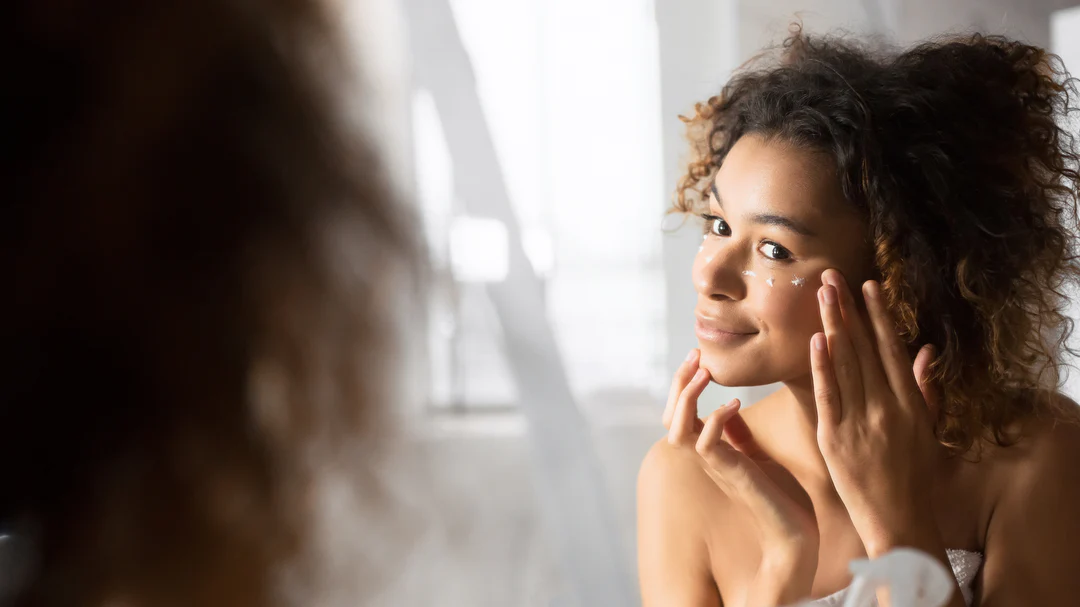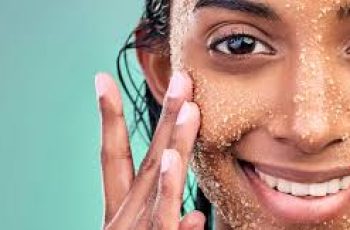
Can You use Retinol Cream Under Eyes?
Yes, it’s true, retinol is a powerful but complex ingredient. I wouldn’t blame you for being a little hesitant about using it around the delicate eye area. But don’t let this result in you missing out on the opportunity to target fine lines, wrinkles, and crow’s feet. The question is, how exactly can you use this potent form of vitamin A around the eyes? (which you weren’t aware, is up to 40% thinner than the rest of the face) Which makes it important to find the best formulas to use that won’t irritate or cause any damage.
Now, let’s find out together about retinol cream and how you can use under eyes. Before we get started if you’re wanting to find out more about what retinol can do for the skin, check out our dedicated blog post about its benefits, over on the The Beauty Insiders.
Does retinol help with under eye circles?
Yes, it certainly does! Under eye circles are a result of a variety of problems, from lack of sleep to genetics. As we age, these under eye circles become more prominent, this is an ideal time to introduce an eye cream containing retinol into your daily evening skincare routine. With retinol’s potent anti-ageing benefits, you’ll help target under-eye circles with a helpful boost in collagen making them appear less visible over time.
Remember that using retinol eye cream may require you to add it into your routine slowly, just like a face serum containing the powerful retinoid. Start off by applying it to the under-eye area once a week allowing the skin to build its tolerance leading to you being able to use it up to 3 times a week. Always ensure you follow the instructions on the packaging, especially if the product is medical grade as the percentage of retinol in the formulation will be notably higher than those found in over-the-counter formulas.
Having said that, when it comes to eye creams, many brands decide to use encapsulated forms of retinoids. Often this includes it being teamed with hydrating ingredients such as hyaluronic acid to keep the delicate under-eye skin moisturised and plumped while retinol works its magic.
Where do you apply retinol around eyes?
Before you start using a retinol eye cream, make sure you have performed a patch test before applying it on the face. If there are no signs of irritation, you are all set to start reaping the rewards. Here is the best way of applying retinol around the eyes.
A little goes a long way, you only need a pea size amount for both eyes
Use your ring finger as this you naturally apply less pressure with
Start off by gently tapping the eye cream on the under-eye area on the bone you can feel away from the lash line
Follow this bone, known as the orbital bone, around the outer corner of the eyes
Tap the excess of eye cream under the eyebrows
Avoid applying retinol cream directly onto the eyelids as this can sometimes cause dryness and irritation
Remember to only use retinol eye cream during your evening routine
This is a basic routine to use when applying retinol eye cream. Having said that, all products and formulations are different so always check you are using a product the correct way.
Can I put retinol on eyelids?
Yes and no, this is very much dependant on the formula of the eye cream containing retinol. Generally speaking, there isn’t much need to apply retinol directly to the eyelid. Instead, you can apply it around the orbital bone and allow the active ingredient to absorb into the skin and make its way to the eyelids to combat signs of wrinkles and loss of elasticity.
However, you shouldn’t experience too much concern if you use an eye cream as these are specifically formulated for the eyes with the correct type of retinoid that will deliver the anti-ageing results, without the worry of causing irritation.
How do you fix crepey skin under eyes?
Apart from specific procedures, such as laser treatments and fillers, the best skincare ingredient to use to combat crepey skin under the eyes is retinol. If you already use a retinol in your skincare routine, you’ll understand how effective retinol is at targeting sagging skin. As I have already mentioned, it is best to use an eye cream containing retinol as this will deliver results without the potency of the ingredient being too harsh for the delicate skin around the eyes.
Can I use retinol eye cream in the morning?
No, it is best to only use retinol eye cream in the evenings. This is due to the fact that exposure to UV rays renders retinol completely useless, wasting your skincare product and not seeing any improvement. For optimal results try using your retinol eye cream in the evening and another formula to apply during the day, specifically something that is packed with vitamin C for counteracting free radical damage whilst brightening the under-eye area, reducing dark circles, and combating any puffiness.
How do you rebuild collagen under your eyes?
Here are some of the easiest and most effective way of rebuilding collagen in the under-eye area.
Ensure you drink enough water throughout the day. This will help flush out any nasty toxins whilst helping to boost collagen production and reducing signs of dark circles.
Apply an eye cream enriched in retinol. This skincare ingredient can deliver impressive anti-ageing results, from wrinkles to loss of elasticity. Use an eye cream for your morning routine packed with vitamin C to protect from free radical damage, such as UV rays, and kick start collagen production. Use a serum containing copper peptides. These are famous for stimulating collagen helping to make the under-eyes look plumped, healthy and wrinkle free. There are some of the easiest ways you can rebuild collagen under your eyes. If you are wanting something that gives you faster results, there are other laser treatments and other procedures to take into consideration. Hopefully, today I have answered some of your questions you have about using retinol cream under eyes, but if you have any more you can find me over on the Procoal Instagram, look forward to seeing you there!
DQH Knowledge drop: In your 20s, your skin cell turnover decreases. (Cell turnover is a key component in keeping your skin youthful.) You know what else slows down? Your collagen production. Starting in your 20s, collagen decreases by about 1 percent per year. Should you want to prevent fine lines and wrinkles, start by eliminating behaviors that contribute to premature aging. “If it’s bad for you, it’s bad for your skin,” says dermatologist Michel Somenek.
“Cigarette smoking reduces blood flow to the skin and causes premature wrinkling and a dull skin texture. Making the repeated pursed motion to inhale can also cause smoker’s lines. Alcohol and recreational drugs are toxins for the skin that damage its cellular structure and DNA,” Somenek tells us. “The faster you eliminate vices while you are young, the better chance your skin and body have to recuperate.” Also, adopting an anti-aging routine in your 20s is key. After all, the best offense is a good defense. We spoke to Somenek and experts Joshua Ross and Audrey Kunin to find out more.
Keep reading for the best anti-aging products for your 20s, according to skincare professionals.
Sunscreen
“We all know that the sun is the number one cause of skin aging and starting the prevention in your 20s is very important,” Ross says. “The majority of your sun damage won’t start to appear until you’re in your 30s, so don’t wait until you see it surface or you’ll be behind the curve. Stay ahead of it with a good-quality zinc-based sunscreen worn daily.”
Farmacy Green Defense Daily Mineral Sunscreen
An invisible sunscreen with SPF 30, plus botanical extracts meant to protect skin with tons of antioxidants. Bonus: It’s clean and fine to use under makeup.
Bareminerals Complexion Rescue™ Tinted Moisturizer Broad Spectrum SPF 30
Although we recommend you use your SPF and moisturizer separately, we also understand moments when you don’t have time or energy for that extra step. For those times, this bareMinerals moisturizer is a great thing to have on hand.
Vitamin C Serum
“A great introduction to anti-aging is to start with a vitamin C serum in your morning skincare routine,” Ross says. “It’s a powerful antioxidant that will neutralize free radicals and brighten the skin.” He adds that it’s a great way to counteract the effects of the sun’s harmful rays, which, as previously mentioned, are among the biggest causes of premature aging.
Drunk Elephant C-Firma™ Vitamin C Day Serum
The Drunk Elephant C-Firma is a lightweight serum that promises to give skin a glow by combining the brightening powers of vitamin C with ferulic acid, l-ascorbic acid, and vitamin E. The included sodium hyaluronate is meant to replace hydration loss, so you shouldn’t have to deal with any irritation.
Sunday Riley C.E.O. Rapid Flash Brightening Serum
This potent serum is jam-packed with vitamin C (15 percent, to be exact), which means it’s a potential superstar at both brightening skin and dousing it in antioxidants.
Peptides
Using peptides on your skin has many benefits, says Somenek. “The skin barrier is what defends the body against pollution, UV rays, bacteria, and toxins. It can be damaged by several everyday factors. Using topical peptides aids in building a stronger barrier,” he says. “Peptides comprise elastic fibers, which are a type of protein. These fibers help to make skin appear taut and firm. Peptides can also help repair damaged skin, relieve inflammation, and even out skin tone. Some peptides can kill acne-causing bacteria that is common in 20-somethings.”
Kunin agrees, saying, “Peptides are an excellent entry point for supporting collagen.” She recommends looking for face and eye treatments that contain these collagen-boosting powerhouses.
Charlotte Tilbury Magic Eye Rescue Cream
This Charlotte Tilbury super-emollient eye cream has a base of coconut oil and shea butter (read: it’s incredibly hydrating). Botanicals plus peptides are meant to help reduce dark circles and boost collagen, respectively.
This creamy moisturizer serves up potent collagen-boosting peptides and pycnogenol, and antioxidant-rich vitamin C. “Instead of sitting on top of the skin, peptides penetrate the outer layer so they go deep. The ‘signals’ they send tell the cells to produce elastin and collagen, which are needed for youthful-looking skin,” explains Somenek.
At-Home Peel Pads
Remember that skin cell turnover fiasco we talked about earlier? One way to help support it is by exfoliating. “Exfoliation is important to help keep skin fresh and luminous,” Kunin says. She recommends using at-home peel pads as an easy and effective way to exfoliate.
“The goal in your 20s is to fight the slowing pace of cell turnover. It is wise to use products that gently exfoliate, yet still remove oil and other impurities. Products that have Alpha Hydroxy Acids (AHA) or Beta Hydroxy Acids (BHA) are a good choice.”
According to Somenek, you should only exfoliate two to three times a week. “People of all ages are guilty of over-exfoliating and that can be too much of a good thing,” he says.
Dermadoctor Kakadu C Intensive Vitamin C Peel Pad
A few swipes of this Derma Doctor powerful peel pad promise to leave your skin glowing and smooth, thanks to the seven (yes, seven) types of chemical exfoliants, including AHA and BHA. It also contains vitamin C via Kakadu plum extract for added brightening and antioxidant protection.
KEY INGREDIENTS Kakadu plum extract is sourced from the Kakadu plum, a fruit grown in northern Australia. It contains vitamin C, which restores the skin’s natural barrier, increases collagen production, and soothes irritation.
Dr. Dennis Gross Skincare Alpha Beta® Universal Daily Peel Pads
These are the gold standard of peel pads, with a cult following and over 900 five-star reviews on Sephora. They’re easy to use and contain a blend of anti-aging exfoliating acids.
Emollient Night Cream
“In your 20s, you need to start upping the hydration in your skincare routine. You may have been cautious of over-moisturizing because of acne in your teens, but as you enter your 20s, your skin transitions and becomes drier,” Ross says. “I recommend an emollient night cream added into your evening skincare regimen.”
“Twenty-somethings need to make sure that they are not using creams that will clog their pores and cause excess oil production,” says Somenek. Opt for non-comedogenic products.
Cerave Skin Renewing Night Cream
One great choice is the CeraVe Skin Renewing Night Cream, which is a non-comedogenic night cream that leaves skin soft and glowy. It combines the moisturizing powers of ceramides and hyaluronic acid.
RoC Retinol Correxion Max Hydration Creme
“The best night cream ingredients contain retinol, benzoyl peroxide, and/or salicylic acid or hyaluronic acid. The goal is to moisturize, yet remove excess oil,” says Somenek. This Roc Retinol Correxion cream fits the bill as it contains both hyaluronic acid and retinol so it promises to moisturize while also being non-comedogenic.


